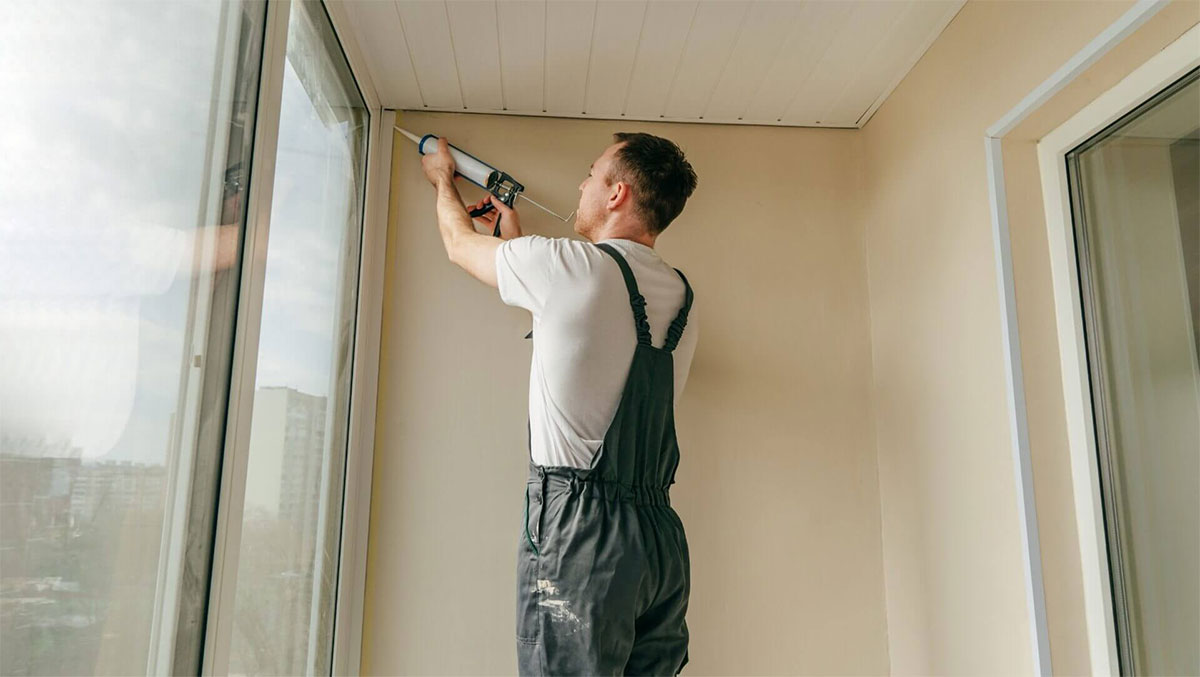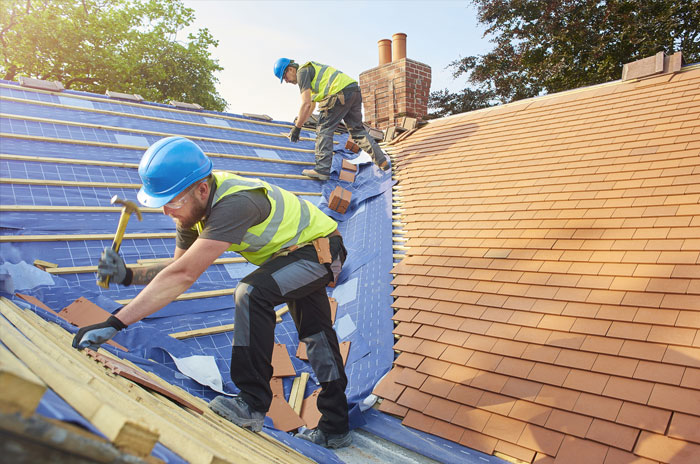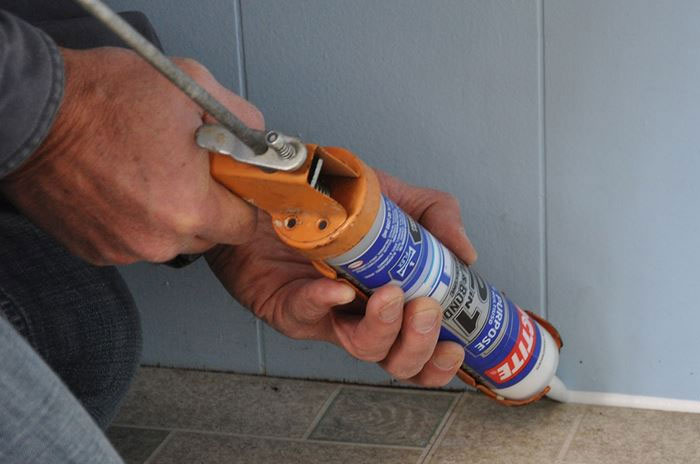
These days, preventing energy loss is a very important issue, and building sealing is one of the most important methods that help us in this field. In this article, we are talking about the sealing of the building.
What is building sealing?
Building sealing meaning is the process of creating a barrier between the interior and exterior of a building to prevent the ingress of unwanted air, water, and other environmental elements. This is achieved through the installation of materials such as sealants, weatherstripping, flashing, and insulation, which are used to fill gaps and cracks in the building envelope and create a continuous air and moisture barrier.
Effective building sealing requires careful planning and installation to ensure that all areas of the building envelope are properly sealed. This may involve a combination of materials and techniques, depending on the specific needs of the building and the local climate conditions.
What is the purpose of building sealing?
The purpose of building sealing is to improve the energy efficiency of a building by reducing air leakage, which can cause drafts, energy loss, and increased heating and cooling costs. Building sealing can also help to improve indoor air quality by reducing the infiltration of pollutants and allergens, and prevent water damage by keeping moisture out of building cavities.
What are the methods of building sealing?
The specific building sealing methods used will depend on the building design, local climate conditions, and the specific goals of the building project. A comprehensive building sealing strategy may involve a combination of these methods to create an effective air and moisture barrier.
also read: Geomembrane Sheet price
There are several methods of building sealing, which can be used individually or in combination to create an effective air and moisture barrier. Some common methods of building sealing include:
- Sealants: Sealants are used to fill gaps and cracks in building materials, such as around windows, doors, and other openings. Silicone, polyurethane, and acrylic sealants are commonly used for this purpose.
- Weatherstripping: Weatherstripping is used to seal gaps around doors and windows to prevent air infiltration. Common materials used for weatherstripping include foam tape, rubber, and metal.
- Flashing: Flashing is used to seal joints and transitions in building materials, such as around windows, doors, and roofs. It is typically made of metal or plastic and is designed to prevent water infiltration.
- Insulation: Insulation is used to reduce heat transfer through building materials, which can help to improve energy efficiency. Common types of insulation include fiberglass, cellulose, and spray foam.
- Air barriers: Air barriers are materials or systems designed to prevent air infiltration through the building envelope. These can include materials such as gypsum board, polyethylene, and spray foam insulation.
- Vapor barriers: Vapor barriers are materials or systems designed to prevent moisture from entering building cavities. These can include materials such as polyethylene, foil-faced insulation, and roofing membranes.
The different types of building sealing
There are several different building sealing types that can be used to create an effective air and moisture barrier. Some common types of building sealing include:
- Air sealing: This type of sealing is used to prevent air infiltration through the building envelope, which can cause drafts and reduce energy efficiency. It can be achieved using materials such as sealants, weatherstripping, and insulation.
- Water sealing: Water sealing is used to prevent water infiltration into the building envelope, which can cause damage and promote the growth of mold and mildew. It can be achieved using materials such as flashing, sealants, and waterproof membranes.
- Sound sealing: Sound sealing is used to reduce the transmission of sound through the building envelope, which can improve the acoustic performance of the building and reduce noise pollution. It can be achieved using materials such as insulation, sound barriers, and resilient channels.
- Thermal sealing: Thermal sealing is used to reduce heat transfer through the building envelope, which can improve energy efficiency and indoor comfort. It can be achieved using materials such as insulation, air barriers, and reflective coatings.
- Vapor sealing: Vapor sealing is used to prevent the diffusion of water vapor through the building envelope, which can cause moisture-related problems such as mold growth and structural damage. It can be achieved using materials such as vapor barriers and permeable membranes.
- Window sealing: This type of sealing is used to seal gaps and cracks around windows to prevent air and water infiltration. It can be achieved using materials such as weatherstripping, caulking, and window films.
- Roof sealing: Roof sealing is used to prevent water infiltration through the roof, which can cause damage and leaks. It can be achieved using materials such as shingles, flashing, and roof coatings.
- Foundation sealing: Foundation sealing is used to prevent water infiltration through the foundation, which can cause damage and flooding. It can be achieved using materials such as waterproof coatings, drain tiles, geosynthetic products and sump pumps.
The specific types of building sealing used will depend on the building design, local climate conditions, and the specific goals of the building project. In many cases, a combination of these types of sealing will be used to create an effective air and moisture barrier.
Advantages of building sealing
Several Building sealing advantages are including:
- Improved energy efficiency: Building sealing can reduce air infiltration and heat transfer through the building envelope, which can improve energy efficiency and reduce heating and cooling costs.
- Improved indoor comfort: Building sealing can reduce drafts, improve indoor air quality, and maintain more consistent temperatures throughout the building, which can improve indoor comfort.
- Reduced moisture infiltration: Building sealing can prevent water infiltration through the building envelope, which can reduce the risk of water damage, mold growth, and other moisture-related problems.
- Reduced noise transmission: Building sealing can reduce the transmission of sound through the building envelope, which can improve acoustic performance and reduce noise pollution.
- Increased durability: Building sealing can help to protect the building envelope from damage and wear caused by moisture, air infiltration, and other environmental factors.
- Longer lifespan of building materials: Building sealing can help to prevent damage to building materials caused by moisture, air infiltration, and other environmental factors, which can extend the lifespan of the building.
- Improved building health and safety: Building sealing can improve indoor air quality by reducing the infiltration of pollutants, allergens, and other contaminants from outside.
How often do we need to seal a building?
The frequency at which a building needs to be sealed can vary depending on a variety of factors, such as the age of the building, the quality of the original construction, and the local climate conditions. In general, building sealing should be done whenever there is evidence of air or water infiltration, such as drafts, leaks, or mold growth.
For new construction, building sealing should be done during the construction process to ensure that the building envelope is properly sealed from the beginning. Regular maintenance and inspections should also be done to ensure that the sealing remains effective over time.
For existing buildings, building sealing may need to be done more frequently, especially in older buildings that may have degraded or damaged sealing materials. It is recommended that building owners have regular inspections of the building envelope, including the roof, walls, and foundation, to identify any areas that may need to be resealed or repaired.
The most common sealants used in buildings
The specific type of sealant used will depend on the type of joint or gap being sealed, the materials being sealed, and the specific requirements of the building project. In many cases, a combination of sealant types will be used to create an effective air and moisture barrier.
There are several types of sealants that are commonly used in buildings, including:
- Silicone sealant: Silicone sealant is a type of elastomeric sealant that is commonly used for sealing gaps and joints in windows, doors, and other building components. It is flexible, durable, and resistant to weathering and UV radiation.
- Polyurethane sealant: Polyurethane sealant is a type of adhesive sealant that is commonly used for sealing gaps and joints in concrete, masonry, and other building materials. It is flexible, durable, and resistant to weathering and chemicals.
- Acrylic sealant: Acrylic sealant is a type of water-based sealant that is commonly used for sealing gaps and joints in walls, ceilings, and other building components. It is easy to apply, dries quickly, and can be painted over.
- Butyl sealant: Butyl sealant is a type of synthetic rubber sealant that is commonly used for sealing joints and seams in roofing and cladding materials. It is flexible, durable, and resistant to weathering and UV radiation.
- Asphalt sealant: Asphalt sealant is a type of bituminous sealant that is commonly used for sealing joints and seams in roofing and waterproofing applications. It is durable, waterproof, and resistant to weathering and chemicals.
- Epoxy sealant: Epoxy sealant is a type of adhesive sealant that is commonly used for bonding and sealing concrete, metal, and other building materials. It is strong, durable, and resistant to chemicals and abrasion.
What is sealing a floor?
Sealing a floor refers to the process of applying a protective coating or sealant to the surface of a floor to protect it from damage and wear. Floor sealing is commonly used in commercial and industrial settings, as well as in residential applications such as kitchens and bathrooms.
What is the best sealant to seal the floor?
The specific type of sealant used will depend on the type of floor being sealed and the specific requirements of the project. Common types of sealants for floors include epoxy, polyurethane, and acrylic sealants.
also read: Geocomposite Sheets
What is sealing a wall?
Sealing a wall refers to the process of creating a barrier between the interior and exterior of a building to prevent air and moisture infiltration. Wall sealing is an important part of building construction and maintenance, as it helps to improve energy efficiency, indoor comfort, and building durability.
What is the best sealant to seal the wall?
The specific type of sealant used will depend on the type of wall and the specific requirements of the project. Common types of sealants for walls include silicone, polyurethane, and acrylic sealants. In addition to sealants, other materials such as weatherstripping, insulation, and vapor barriers may also be used to create an effective air and moisture barrier in walls.
Conclusion
sealing is an important process in building construction and maintenance that involves creating a barrier to prevent air and moisture infiltration. Building sealing can provide numerous benefits, including improved energy efficiency, indoor comfort, durability, and health and safety. Common types of sealants used in buildings include silicone, polyurethane, acrylic, butyl, asphalt, and epoxy sealants. The specific type of sealant used will depend on the type of joint or gap being sealed, the materials being sealed, and the specific requirements of the building project. Regular maintenance and inspections are also important to ensure that the sealing remains effective over time.









